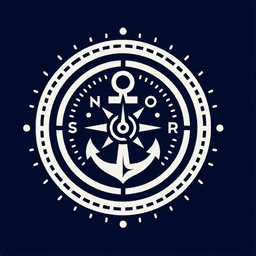
Scope: Definition, Examples, and Applications in Various Contexts
January 16, 2025
Scope
In maritime contexts, the term "scope" refers to the ratio of the length of anchor rode (line or chain) to the depth of the water where the vessel is anchored. This is a crucial concept for sailors as it directly affects the holding power of the anchor and the safety of the vessel.
Typically, a scope of 7:1 is recommended, meaning for every foot of water depth, seven feet of rode should be let out. This ratio ensures that the anchor lies flat on the seabed, providing maximum holding power. In calm conditions, a scope of 5:1 may be sufficient, while in rough weather, a scope of 10:1 or more might be necessary.
Understanding and calculating the correct scope is essential for safe anchoring, as it helps prevent the vessel from dragging anchor and potentially running aground or colliding with other vessels. Sailors must also consider factors such as tidal changes, wind, and current when determining the appropriate scope.
In summary, scope is a fundamental concept in anchoring that ensures the safety and stability of a vessel at sea. Proper management of scope can prevent accidents and ensure a secure anchorage.
Understanding Scope in the Maritime Industry
What is a Scope in Nautical Terms?
In nautical terms, scope refers to the ratio of the length of the anchor rode (the line or chain) to the depth of the water. This is crucial for ensuring that the anchor holds effectively. A common recommendation is a scope of 7:1, meaning for every foot of water depth, seven feet of rode should be used. This ratio helps in maintaining the anchor's grip on the seabed, especially in varying weather conditions.
What Does Scope Mean When Anchoring?
When anchoring, scope is the length of the anchor line compared to the height from the deck cleat to the seabed. Proper scope is essential for safe anchoring, as it affects the angle at which the anchor line pulls on the anchor. A longer scope reduces the angle, allowing the anchor to dig in more effectively and hold the vessel in place.
What Does Scope Mean in Sailing?
In sailing, scope is a critical factor for anchoring. It involves calculating the correct ratio to ensure the anchor holds the vessel securely. The scope ratio is determined by the depth of the water and the length of the anchor line. This calculation is vital for safe anchoring, especially in areas with strong currents or winds.
What Does the Maritime Industry Include?
The maritime industry encompasses a wide range of activities related to the sea and shipping. This includes transport, logistics, regulatory frameworks, engineering, information technology, finance, and insurance. The industry is integral to global supply chains, facilitating the movement of goods and services across the world.




